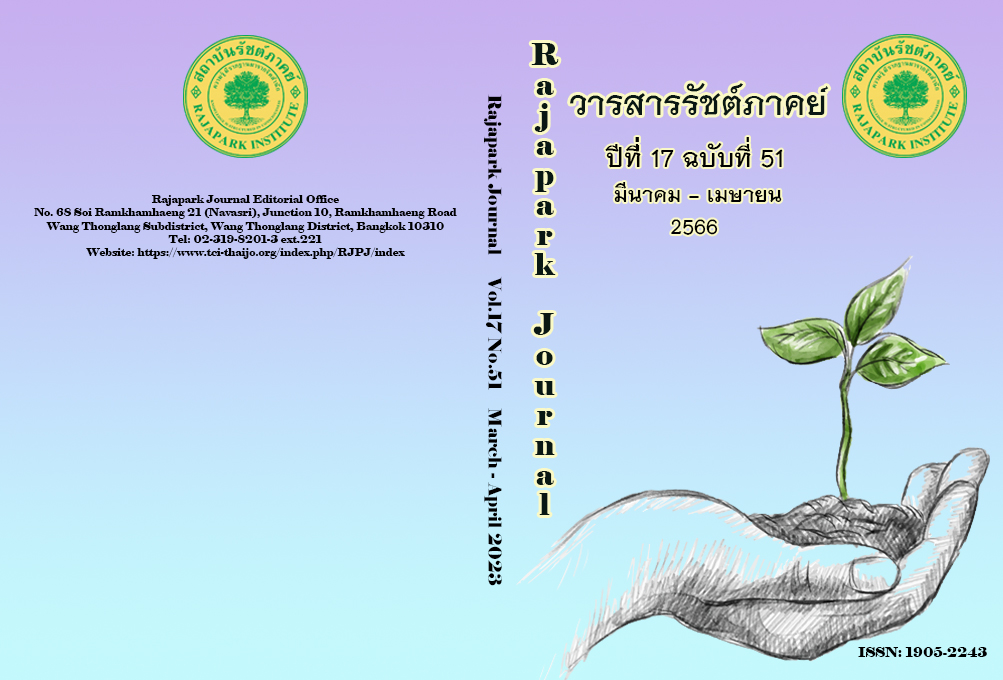Instructional Methods Used in English Teaching as a Foreign Language (EFL) Classroom Practice at the University Level in Thailand
Main Article Content
Abstract
A decrease in Thai English language proficiency in the previous years is a mirror of ELT in Thailand. This study examined indispensable elements that reflect an effective EFL classroom practice. The samples included 74 Thai EFL teachers obtained through purposive sampling and 15 key informants specializing in ELT, TESOL, TEFL, TESL, and ESP. Instrumentations included a set of questionnaires for gathering quantitative data validated by three experts (α = 0.92) and a semi-structured interview for gathering qualitative data. Descriptive statistics were used for quantitative data analysis, and an inductive summary was applied for qualitative data analysis. It was found that the lesson was presented in a logical procedure ( = 4.31, SD = 0.64), an opening (
= 4.33, SD = 0.62), sequencing (
= 4.30, SD = 0.70), pacing (
= 4.16, SD = 0.69), and a closure (
= 4.47, SD = 0.55). The interviews revealed that a meaningful activity enabling students to maximize their ideas, intellectualities, and creativity was underlined, along with the use of authentic commercial books, while the teacher played multiple roles as a role model, a facilitator, and a monitor. The results implied that communicative and interactive classroom practice should not only trigger students’ potential but also enrich their autonomous learning.
Article Details

This work is licensed under a Creative Commons Attribution-NonCommercial-NoDerivatives 4.0 International License.
Views and opinions appearing in the Journal it is the responsibility of the author of the article, and does not constitute the view and responsibility of the editorial team.
References
Breen, M. P., & Candlin, C. N. (1980). The Essentials of a Communicative Curriculum in Language Teaching. Applied Linguistics, I(2), 89-112. doi:10.1093/applin/I.2.89
Brown, H. D. (2001). Teaching by Principles: An Interactive Approach to Language Pedagogy (2nd ed.). Longman.
Creswell, J. W., & Plano Clark, V. L. (2017). Designing and Conducting Mixed Methods Research (3rd ed.). SAGE.
Darasawang, P. (2007) English Language Teaching and Education in Thailand: A decade of Change. In English in Southeast Asia: Varieties, Literacies and Literatures Newcastle, D. Prescott (ed.) (187-204). Cambridge Scholars.
Debyasuvarn, B. (2011). A Collection of Articles on Language Teaching. Pasaa Paritat Journal, 25, 22-64.
Ellis, R. (1991). Second Language Acquisition and Language Pedagogy. Multilingual Matters.
Ellis, R., & McClintock, A. (1994). If You Take My Meaning: Theory Into Practice in Human Communication: Bloomsbury Academic.
Farrell, T. S. C. (2002). Lesson Planning. In J. C. Richards & W. A. Renandya (Eds.), Methodology in Language Teaching: An Anthology of Current Practice. Cambridge University.
Harmer, J. (2007). How to Teach English (2nd ed.). Pearson Longman.
Hilado-Deita, H. C. (2015). History of English Language Teaching: A Glimpse of Thailand Scenario. Sripatum University Chonburi Journal, 12(1), 16-26.
Intarapanich, C. (2013). Teaching Methods, Approaches and Strategies found in EFL Classrooms: A case study in Lao PDR. Procedia-Social and Behavioral Sciences, 88, 306–311.
Noom-ura, S. (2013). English-teaching Problems in Thailand and Thai Teachers’ Professional Development Needs. English Language Teaching, 6(11).
Nooyod, A., & Hiranto, N. (2017). A Study of the Result of Developing on English Instructional Management Skill Based on Communicative Language Teaching Using Lesson Study Innovation for English Major Students, Faculty of Education, Loei Rajabhat University. Journal of Education Khon Kaen University, 40(1), 60-72.
Nunan, D. (1989). Designing Tasks for the Communicative Classroom. Cambridge University.
Office of Higher Education Commission. (2016). Policy to Upgrade English Language Standards in Higher Education Institutions. Office of Higher Education Commission.
Richards, J. C., & Lockhart, C. (1996). Reflective Teaching in Second Language Classrooms. Cambridge University.
Richards, J. C., & Rogers, T. S. (2001). Approaches and Methods in Language Teaching. Cambridge University.
Saengboon, S. (2017). Teaching Wisdom of Award-Winning Teachers: A Case Study of Thai EFL Teachers. Case Research Journal, 9(2), 18–44.
Scimago Institution Ranking. (2022). University Rankings. https://www.scimagoir.com/rankings.php?sector=Higher+educ.&country=THA&area=1200
Srisa-ard, B. (2018). Result Interpretation when Collecting Data on a Rating Scale. Journal of Educational Measurement Mahasarakham University: JEM-MSU, 2(1), 64-70.
Srithongkham, K., & Intakaew, A. (2022). A Comparative Study of the use of Coursebook for Teaching English Online by Thai Lecturers in Higher Education Institutions. Rajapark Journal, 16(44), 42-55.
The Education First English Proficiency Index. (2022). EF English Proficiency Index – Thailand 2022.


